
You can be out in the world and encounter something you think is beautiful, or majestic, or just likeable somehow, but there are also things that move you in ways that are hard to describe and impossible to explain.
Some of the things most likely to have this effect on me are high woods; deep frost; ice; snow; the sound of wind moving through a wood or forest, particularly if it’s distant; heavy mist and fog, especially in or above a valley; and certain kinds of tarn.
A tarn is most simply “a small mountain lake, having no significant tributaries” (OED).1
In my mind’s eye tarns are always in the distance; I’m climbing up or scrambling down to them, or walking away; they’re growing or diminishing, or winking in and out of sight, or are an unseen but sensed presence over the horizon, like the furniture in an unlit but familiar room at night.
Possibly this is because mostly I’ll trek a few miles to a local one, stop for only a moment, if I stop at all, and then walk on, either homewards or to the nearby village with a few shops and a pub.
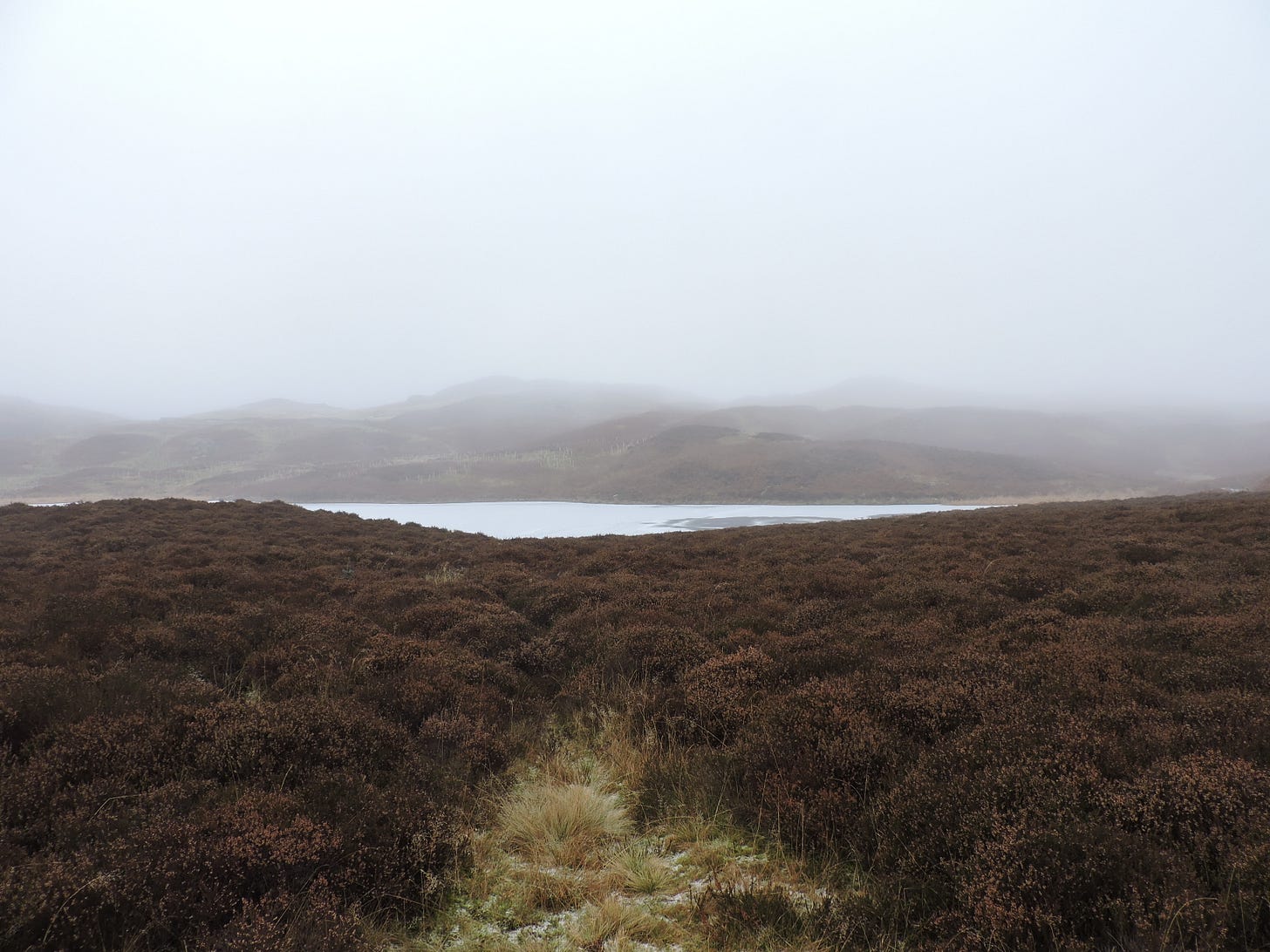
A proper tarn can only be walked to, unless perhaps you’re in a farm buggy. It might be set in fells with a valley below and higher places beyond. Ideally it will be small enough that you can see all or most of it from a single good vantage but large enough that walking around it isn’t trivial. It should also seem, or feel, as if it might be deep, and have some hard, rocky edges, not just be the wettest part of a marsh. Some human works are acceptable, if they’re weathered; if they look like decayed relics of an earlier civilisation (i.e. before ~1970), so much the better.2
That’s my view. Others differ.
In Tarns of Lakeland, the artist W Heaton Cooper discussed some of the struggles to define what a tarn is—a surprisingly contestable question—and concluded:
In deciding what should be included in this book, the influences that weighed most have been their size and elevation above a main valley; whether they are already called tarns; and most of all perhaps, as I am a painter, what the place looks like and what one sees from it. I felt that any too clear-cut definition was not possible along so many lines, or indeed, in this case, desirable. Instead I have allowed myself to be free to include anything that had the feel and character of a tarn and in which I found delight. (my emphasis)
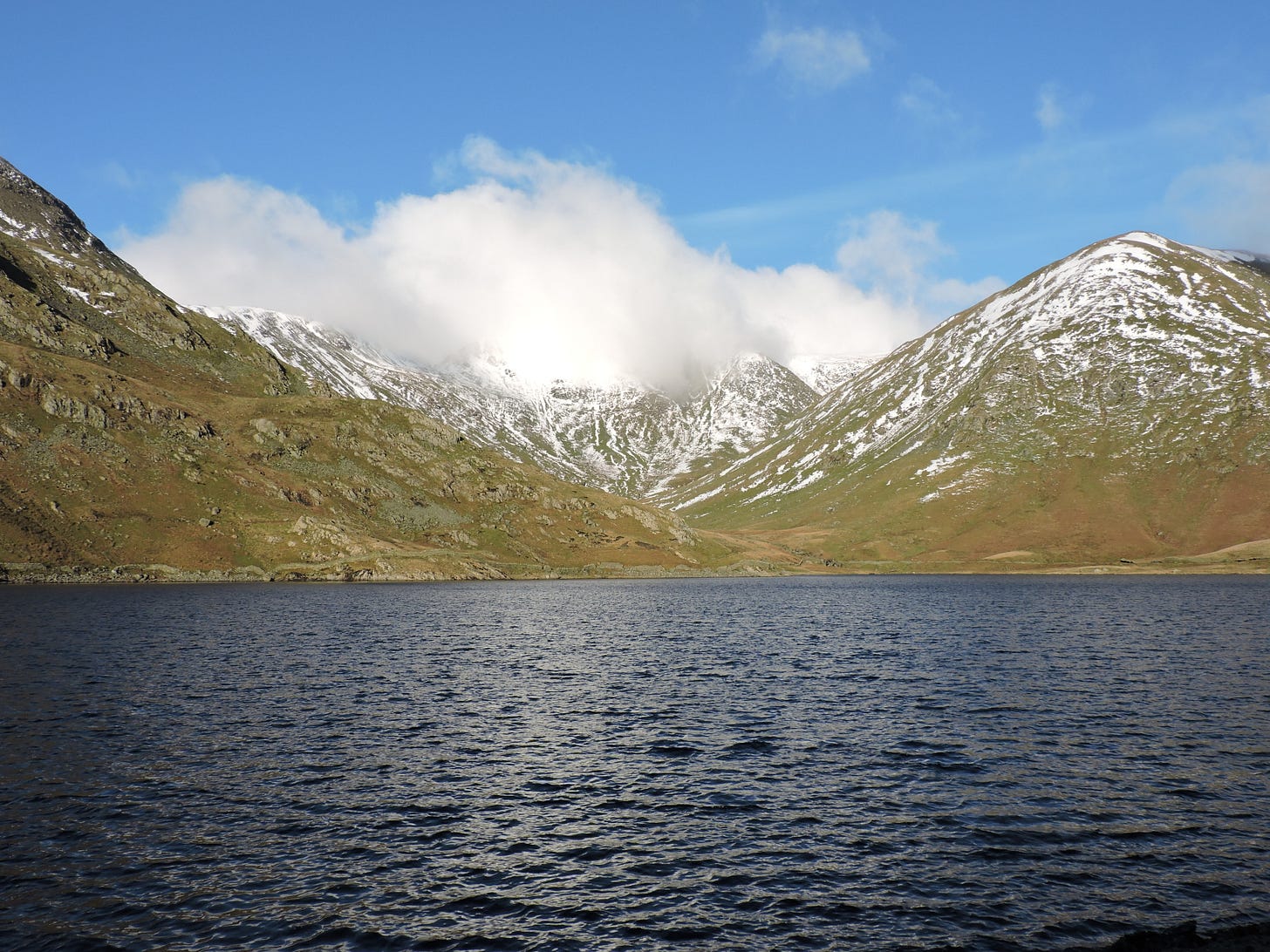
We could start talking about tarns by saying that “A tarn (or corrie loch) is a mountain lake, pond or pool, formed in a cirque (or ‘corrie’) excavated by a glacier”, and then move on from there, defining our terms and offering a technical, carefully self-consistent description.3 That has its place. Or we could say something else—but what?
We could suggest that tarns have a character, not unlike that of a story (or ‘romance’, in the sense of a fabulous tale):
[C S] Lewis argues that it is the quality or tone of the whole story that is its main attraction. The invented world of romance is conceived with this kind of qualitative richness because romancers feel the real world itself to be “cryptic, significant, full of voices and ‘the mystery of life.’” Lovers of romances go back and back to such stories in the same way that we go “back to a fruit for its taste; to an air for … what? for itself; to a region for its whole atmosphere—to Donegal for its Donegality and London for its Londonness. It is notoriously difficult to put these tastes into words.”4
We could say that there’s a tarnness of tarns that isn’t just a list of common physical attributes; that tarns in general and each one specifically possess a unique character and atmosphere that is hard to express and feels like it means something, you don’t know what.
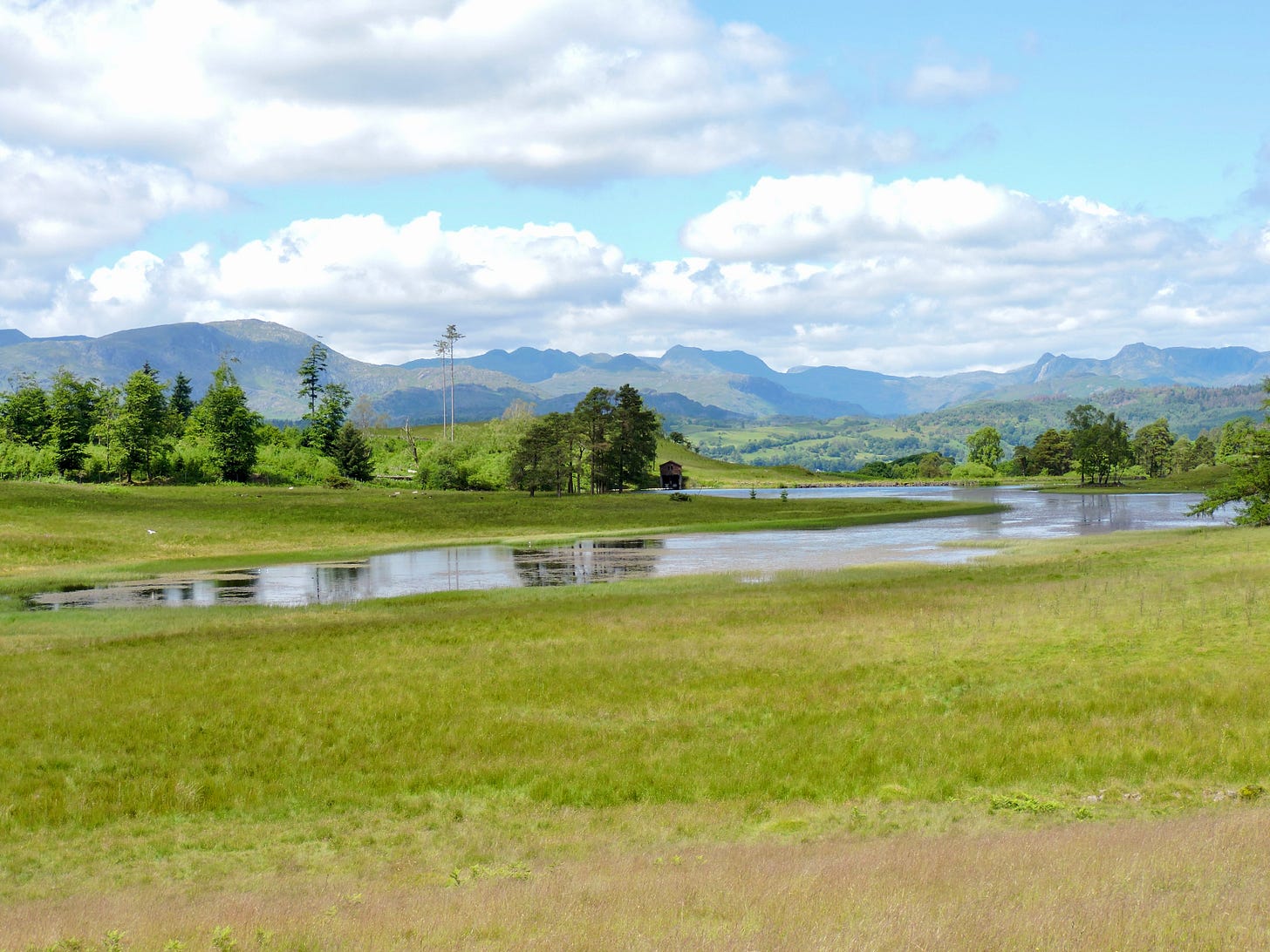
Sometimes on my tarn walks, not always, there comes a moment when I have an overwhelming sense of place, of tarnness. It’s brief; I can feel it passing even as I experience it; it almost feels like I’m remembering it as it happens.
If I try to describe this, it’s like trying to put clothes on a ghost to give it some familiar, comprehensible shape. All I can say is that it’s best not looked at directly, you should be as unselfconscious as possible, and that it feels like an impression is trying to form that is made up of more sensory data than you can use—that we have hidden senses5 that we don’t or perhaps cannot use or comprehend fully; that the world exists in more dimensions than we know. Perhaps synaesthesia is something like this.6
The other thing is that it’s agonisingly inconclusive, a picture or melody that never completes. And as soon as you try to capture it, it’s gone.
This is why I’ll walk for an hour or two, sometimes longer, to a tarn, with the same or more to get home, and only pause briefly, if at all. It’s why during the 2020/21 lockdowns I’d walk alone to Gurnal Dubs and Potter Tarn time and again and lose all sense of mundane pandemic life. It may be why one of my friends was so mysteriously, furiously pained when he found a wild swimmer’s discarded towel on a bush near his favourite tarn this summer.
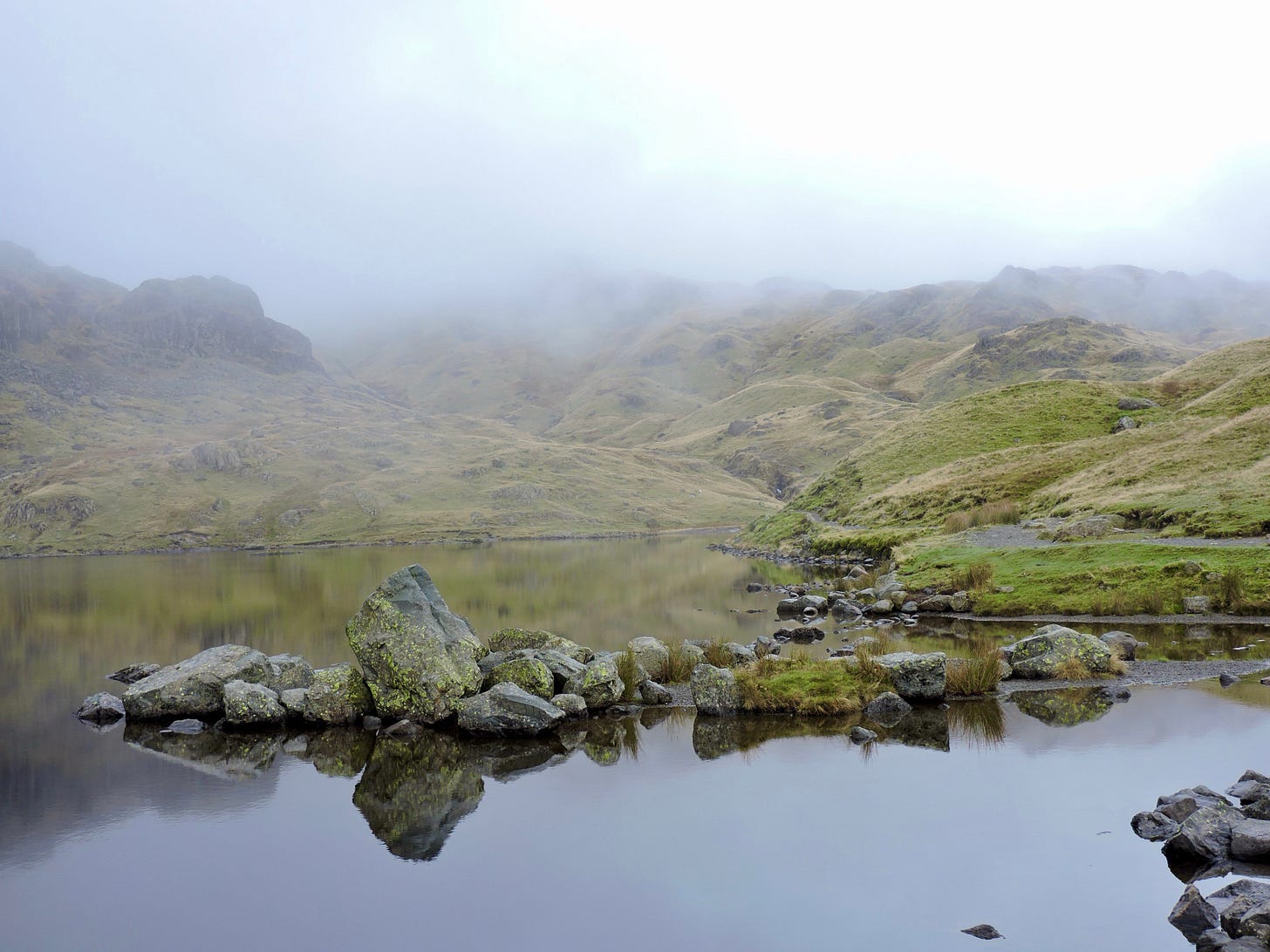
By their nature these things are sensitive to disturbance and my sense of tarnness is different, weaker and more jumbled, furtive, if I’m in company or there are other people nearby—it’s always a gamble when you set out, though actually that’s fine with me, I like it as a risk.
The worst thing you can do is linger trying to capture and hold the moment, you have to enjoy it for the passing experience it is; but then I’ve never understood people who love butterflies so much they spend all their time killing them in jars and pinning their dead bodies in collection books.
Sometimes I wonder if ideologies, fanaticism, cults, attempts at utopia, degraded materialism, etc are at least partly a form of escapism because some people can’t bear to think that the fullest meaning in life will always elude us, and such intimations as we have are fleeting and largely inexpressible.
One way to handle the problem of mystery in life is not to believe in it. Perhaps, after all, it’s mere superstition, an antique malfunction of our organism. Everything real is material and explicable. Another is to believe in it but not speak of it, like early Wittgenstein (I think):
We feel that even if all possible scientific questions be answered, the problems of life have still not been touched at all…. There is indeed the inexpressible. This shows itself; it is the mystical … Whereof one cannot speak, thereof one must be silent.7
Obviously here I’m disregarding his counsel and trying to speak whereof he thought one cannot.
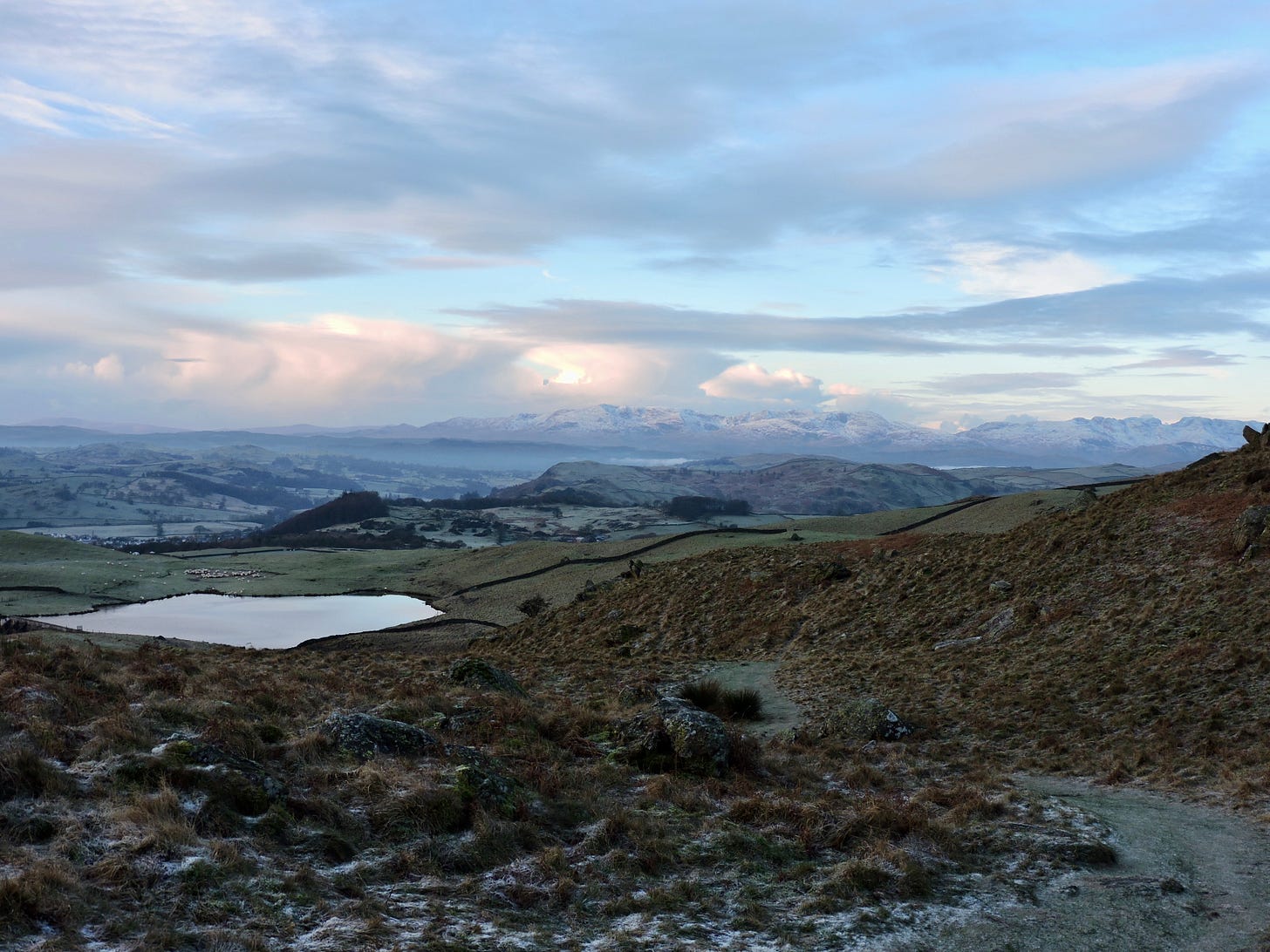
After all, perhaps much of art, at least of a certain kind, is an attempt to express the inexpressible; to hint, suggest, offer a sideways glance at those things that can’t simply be told. Sometimes, at least, it’s not entirely futile. For forty years I’ve remembered something I read about a fictional mountain lake as a boy—
Less than a mile away, and a little below them, for they still stood high up on the west side of the dale, there lay a mere. It was long and oval, shaped like a great spear-head thrust deep into the northern glen; but its southern end was beyond the shadows under the sunlit sky. Yet its waters were dark: a deep blue like clear evening sky seen from a lamp-lit room. Its face was still and unruffled. About it lay a smooth sward, shelving down on all sides to its bare unbroken rim…. They stooped over the dark water. At first they could see nothing. Then slowly they saw the forms of the encircling mountains mirrored in a profound blue, and the peaks were like plumes of white flame above them; beyond there was a space of sky. There like jewels sunk in the deep shone glinting stars, though sunlight was in the sky above. Of their own stooping forms no shadow could be seen.8
⁂
Note: The tarns featured in the snaps here aren’t objectively the ‘best’ according to any common criteria, but they either are or have been local to me (except Stickle Tarn) and I like them. I also just happen to have snaps of them. All photography is by the author (copyright Paul Fishman 2024). I obtained details for the tarns (elevation etc) from this useful site (for which thanks).
Also note: tarn is a northern English word, used especially in Lakeland, where I grew up and now live again. (The Oxford English Dictionary (OED) says, “Originally local northern English, now generally used by geologists and geographers.”) It comes from Old Norse; there are many Viking place names etc in these parts also. Supposedly it comes from tjörn (tear drop, pond, small lake). The OED’s earliest evidence for tarn is from ~1400.
Paul Fishman (Skelsmergh, August 2024)
There are much more technical definitions in use by geologists etc.
There is something called a ‘lowland tarn’ but that’s nothing to me. Of the three tarns I can walk to fairly easily from my front door—Gurnal Dubs, Potter Tarn and Skelsmergh Tarn—I almost never go to the last one (only 115 metres, if that—lowland). It’s also shallow but ‘bottomless’ (i.e. soft mud bottom) and soggy all round; one for fishing and birdwatching. In Exploring Lakeland Tarns (out of print), Don Blair describes it as “sinister” twice, which possibly makes it sound more exciting than it is.
Yes, I did just go to Wikipedia for this, which is not only lazy but very 2010 (if that late). If you’re e.g. building a reservoir or conducting a survey, obviously this approach is more useful than seeking an inexpressible feeling of tarnness.
It is generally accepted that we have more than the standard five senses, some subtle and rarely consciously apprehended.
Artist and neuroscientist Felicity Inkpen represents her number–colour synaesthesia here with a short explanation. Possibly her experience with mathematics is not wholly unlike what I talk about here (I haven’t asked her).
Ludwig Wittgenstein, Tractatus Logico-Philosophicus. I am speaking where I should be silent in representing Wittgenstein’s thought even in the most basic way.
J R R Tolkien, The Fellowship of the Ring, the first book of The Lord of the Rings, describing Mirrormere (Kheled-zâram).



